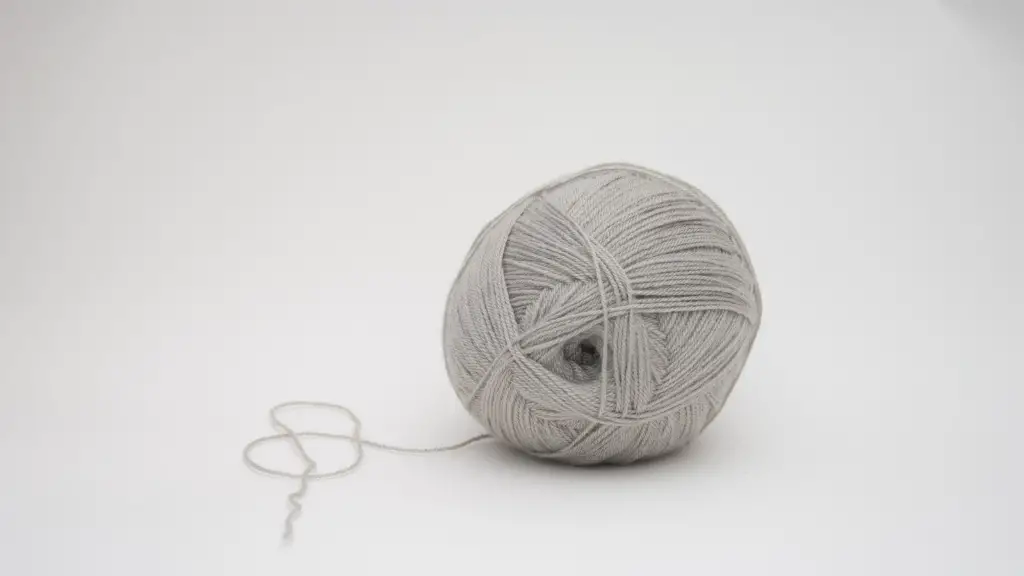Adjusting Foot Pressure on a Brother Sewing Machine
Most Brother Sewing machines have an adjustable presser foot pressure dial. This helpful feature makes it easy to accurately control the amount of pressure applied to any fabric. Proper pressure allows for cleaner seams and neat stitch work. Here is a step by step guide on how to adjust presser foot pressure on a Brother Sewing machine.
To begin, firstly make sure the machine is turned off and unplugged. Secondly, turn the dial located on the side of the sewing machine in order to adjust the tension. If a lower foot pressure is needed, then turn the dial to the right. Conversely, if a higher foot pressure is needed, turn the dial to the left. The amount of pressure exerted by the presser foot can therefore be easily regulated.
The pressure dial can be utilized to tailor the amount of pressure, thus making sure stitches are sewn properly. Otherwise, if the pressure is too high, it may cause puckering of the fabrics or a distorted stitch as the thread doesn’t have enough tension to pull through the fabric.
It is important to remember that the presser foot pressure should be adjusted according to the type of fabric being sewn. For fabrics with a thicker weave, such as denim, a higher pressure setting is needed. For lighter fabrics, such as silk, the pressure needs to be adjusted to a lower setting. Generally speaking, it is recommended to test the machine on scrap fabric to ensure that the pressure dial is set correctly before attempting to sew an actual garment.
The pressure dial can also be adjusted to accommodate different stitch lengths. A shorter stitch length works better when using materials that are thicker or heavier, while a longer stitch length is suited for lightweight fabrics.
Finally, presser foot pressure should be adjusted once the fabric type is known. If the pressure is not set correctly, the sewing results will not be satisfactory. Additionally, a correct pressure setting will allow the fabric to move freely without getting caught in the feed dogs.
Troubleshooting Presser Foot Pressure
Adjusting presser foot pressure is a fairly simple DIY task that anybody can do. However, it is possible that some problems may arise which can interfere with the setting of the presser foot pressure. Some of these problems can include the following:
- The pressure dial does not move – This can be caused by a malfunctioning presser foot pressure adjustment mechanism.
- The stitch length is not adjusted correctly – One of the most common causes of this problem is that the presser foot pressure is set too high, thus causing the thread to become too tightly wound.
- The fabric puckers – If this happens, it usually means that the foot pressure is set too low.
In order to fix any of these issues, the main goal is to find the correct presser foot pressure. Test the machine on scrap fabric to ensure that it is set correctly. If the adjustments do not seem to be helping, consult the user manual for further instructions.
Benefits of Adjusting Pressure Foot Pressure
Adjusting the presser foot pressure on a Brother Sewing machine offers a range of benefits. These include smoother seams, neater stitches and an overall better sewing experience.
A properly adjusted presser foot pressure ensures that stitches can be formed evenly, which gives garments a more professional-looking finish. It also prevents any fabric from getting stuck or pulled down in the feed dogs.
In addition, by adjusting the presser foot pressure correctly, it is possible to achieve a perfectly even stitch length. This can help to prevent any unsightly skipped stitches or thread clumping, as the presser foot pressure provides a more even tension on the thread.
Finally, by adjusting the presser foot pressure correctly, one can ensure that the fabric is not damaged or pulled in any way, as too much pressure could potentially cause the fabric to tear or stretch.
Tips for Adjusting Presser Foot Pressure
Adjusting the presser foot pressure on a Brother Sewing machine can be a daunting task for any beginner. Here are some tips that could make the process easier:
- Always unplug the machine when making any adjustments to the presser foot pressure.
- Test the machine on scrap fabric in order to get a feel for the correct pressure setting.
- Make sure to adjust the pressure according to the type of fabric being sewn.
- Do not exceed the highest recommended pressure setting on the machine.
- If the adjustments do not seem to be helping, consult the user manual for further instructions.
FAQs
Below are some frequently asked questions about adjusting presser foot pressure:
- Q: What is the purpose of adjusting presser foot pressure?
A: The purpose of adjusting the presser foot pressure is to allow for more control over the tension of the thread, resulting in cleaner seams and neat stitch work. - Q: How do I know if the pressure is set correctly?
A: The best way to check if the pressure is set correctly is to test the machine on scrap fabric. - Q: Can presser foot pressure be adjusted manually?
A: Yes, most Brother Sewing machines have an adjustable presser foot pressure dial. - Q: Does the pressure need to be adjusted according to the type of fabric being sewn?
A: Yes, it is important to adjust the pressure according to the type of fabric being sewn as different fabrics require different amounts of pressure.
Conclusion
Adjusting the presser foot pressure on a Brother Sewing machine is a simple task that can be done with just a few adjustments. Properly adjusted pressure will ensure that fabrics move freely, stitches form evenly, and seam edges look neat. The pressure should be adjusted according to the type of fabric being sewn and should never exceed the maximum recommended pressure setting.



